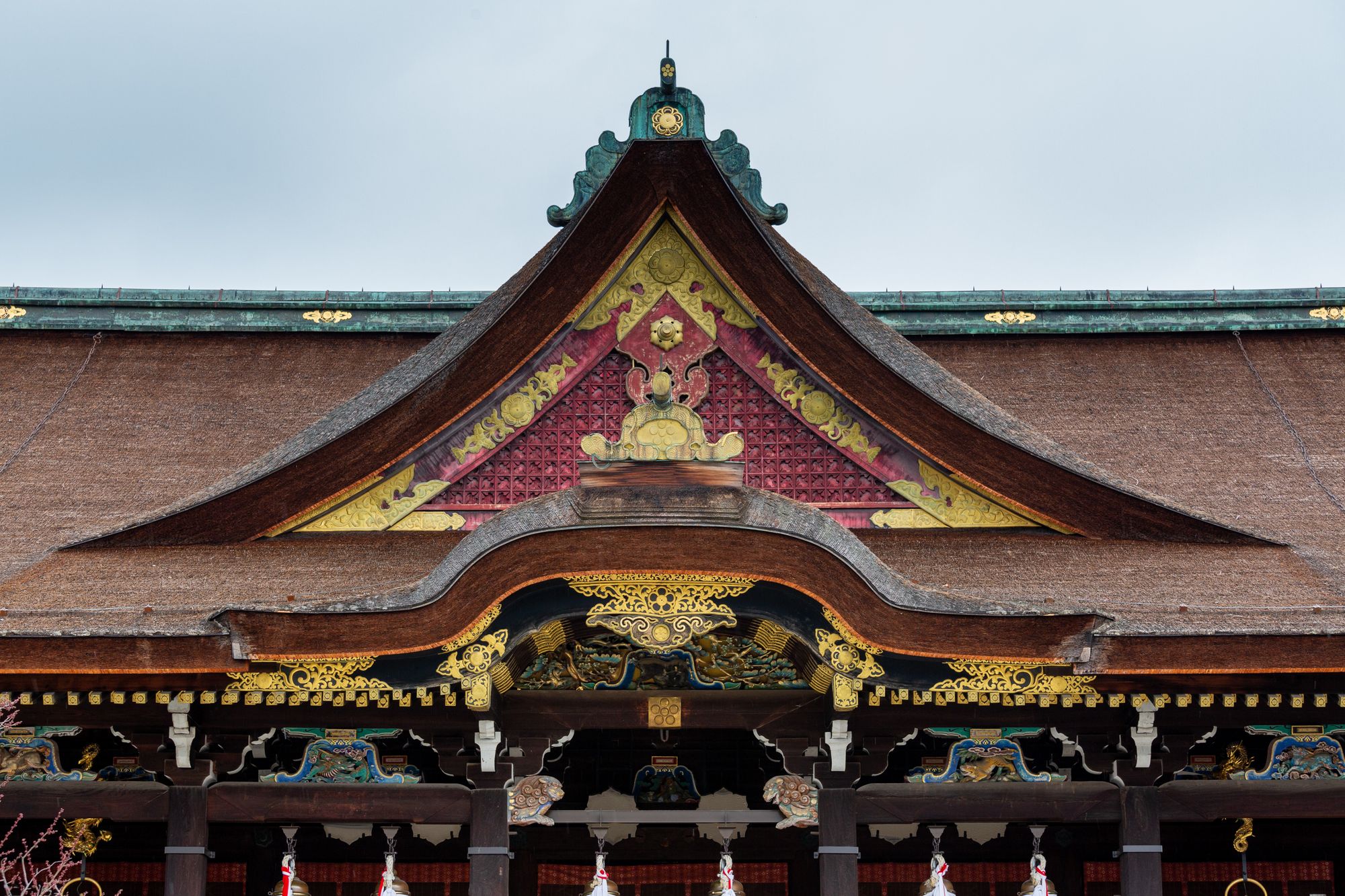
Almost a year ago now I was lucky to be able to go back to my old stomping grounds in Kyoto, where I once studied Japanese in the hopes of maybe learning enough of the language to enroll in a university there to continue my studies in philosophy, perhaps being able to one day be another “professional” philosopher to walk along the Philosopher's Path.
I soon realized this was a pretty bad idea. I was very slow at learning Japanese, and it would probably take me ten years or more just to come up to speed enough to enroll in any Japanese-language philosophy program. Instead I opted to quit and just casually continue learning philosophy… and hoped to come back someday as just a tourist.
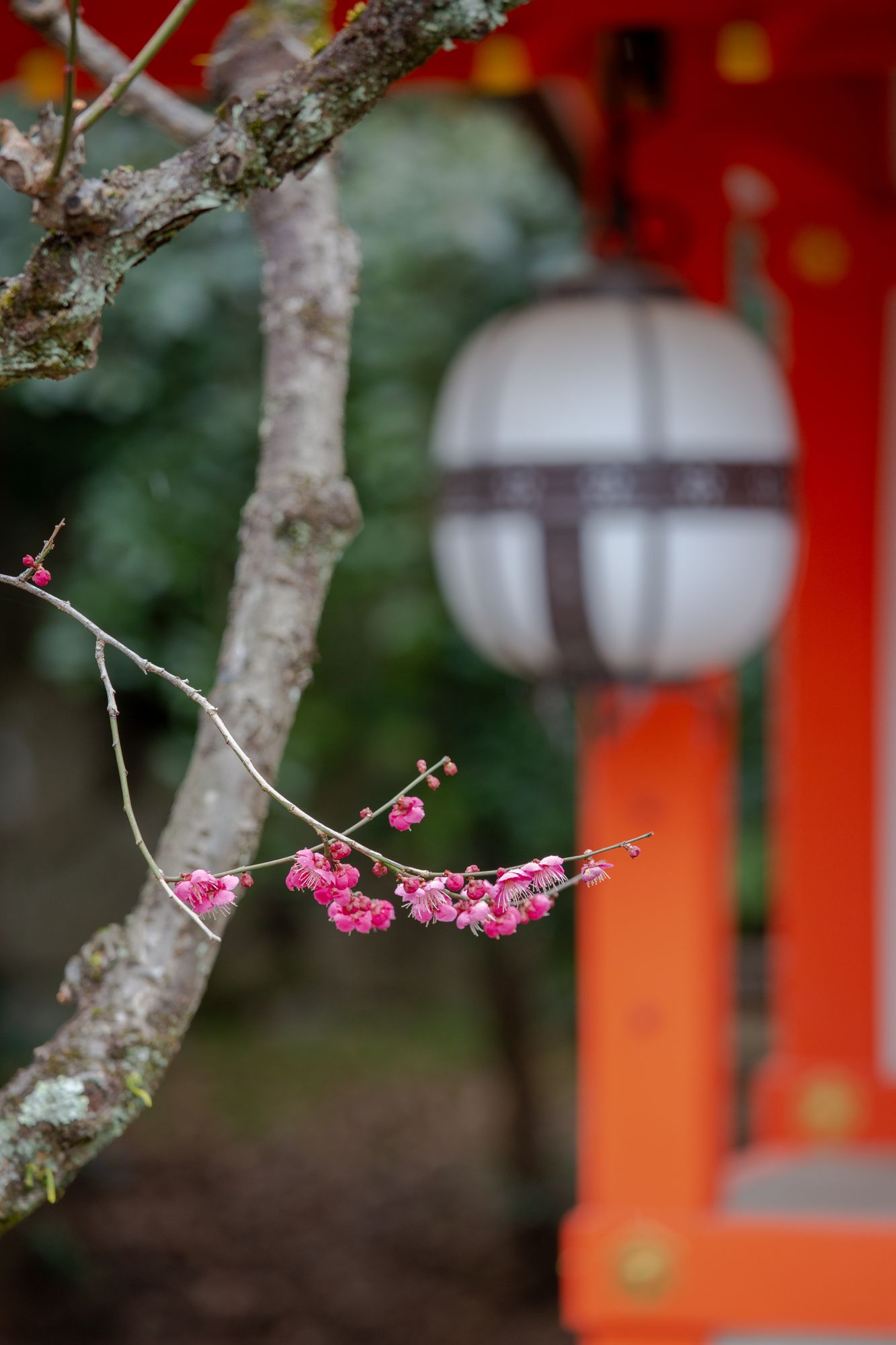
(English version)
When the east wind blows let it send your fragrance, oh plum blossoms; although your master is gone, do not forget the spring
— Sugawara no Michizane, collection of poems
(Japanese version)
東風吹かばにほひおこせよ梅の花 主なしとて春を忘るな
— 菅原道真、拾遺和歌集
(written by Michizane as he was leaving Kyoto)
The nice thing is that Kyoto, and Japan in general, is best experienced as a tourist anyway.
In February last year I had time to take a whole day to wander around as a nonstudent, not worrying about time or deadlines or trying to see all “can’t miss” attractions in the city. And not trying to see the whole city in a day, which is madness. Coming back to a city you’ve already “seen” can be calming like that.
The timing of the visit might seem strange to some. Why not visit a few months later and see the famous cherry blossoms?
In a lot of ways I prefer plum blossoms over cherry blossoms. The pinks are easier to photograph and make for more vibrant photos over cherry blossoms, which can often be washed out completely on what are usually dreary cloudy days.
I also enjoy the plum blossoms because they get less attention than cherry blossoms or even the maple leaves of fall. At this time of year it’s still chilly, but it’s beautiful to see nature starting to wake up out of winter.
Though spring was approaching, during my visit it even started to snow for a bit! It was nice to enjoy a bit of seasons in transition…
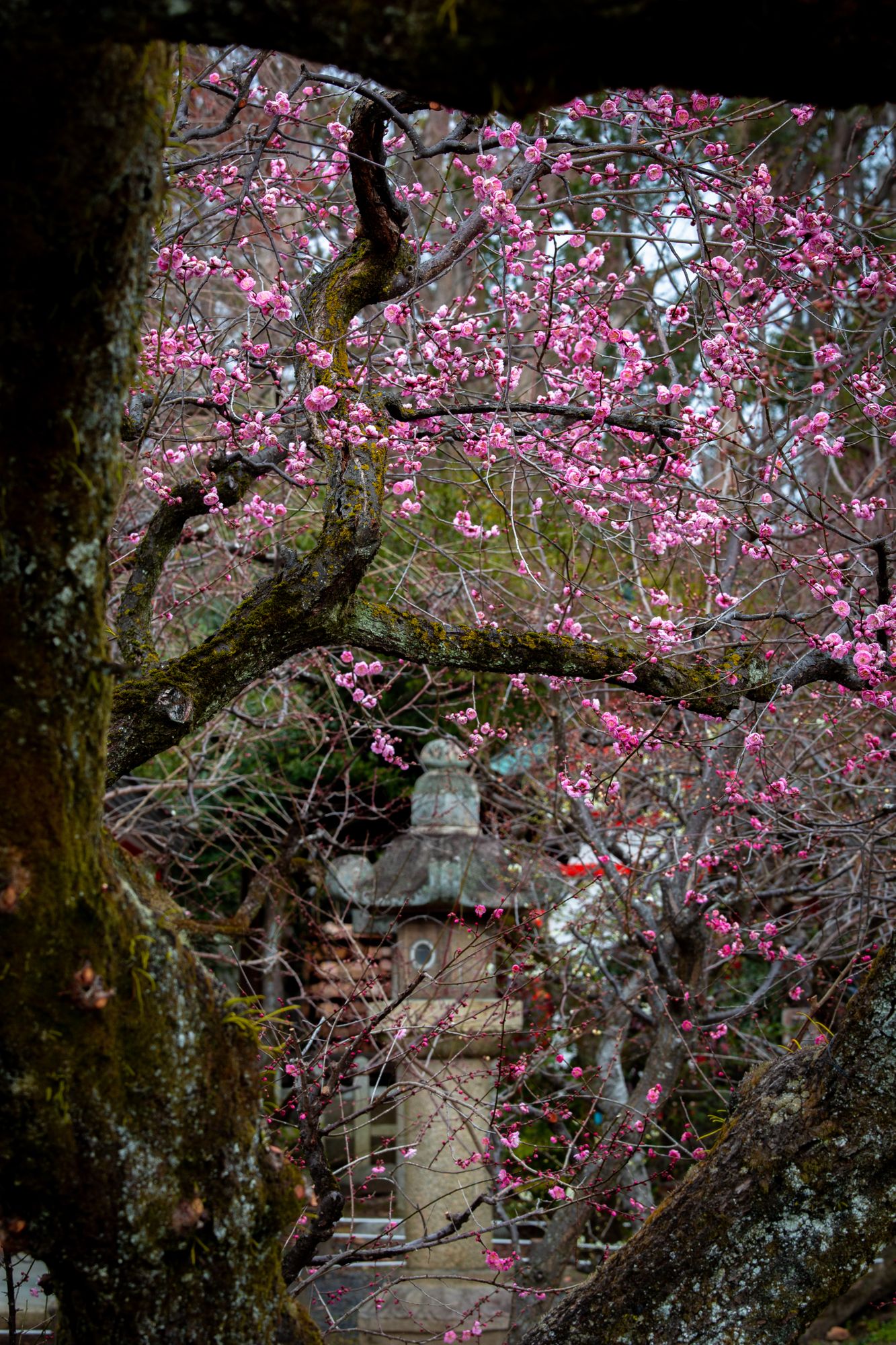
A little bit of history
Kitano Tenmangū was first built in the year 947 to appease the angry spirit of bureaucrat, scholar and poet Sugawara no Michizane, who became deified in 986 as “Tenjin”, the kami (deity) of academics, scholarship and learning. For that reason, the shrine is popular with Kyoto students praying for success in exams.
The shrine is also associated with oxen and plum blossoms (ume).
The ox connection comes in because Michizane was born in the year of the ox, and oxen are considered to be messengers of the gods. There are many oxen statues on the shrine grounds.
The plum blossom (ume) connection comes into play because the plum was Michizane’s favorite tree, and Kitano Tenmangū is full of them, with different species blossoming white or reddish pink. During this time the Bai-en (ume garden) is open to the public. In autumn the Momiji-en (maple garden), with hundreds of maple trees, is open to the public.
A flea market is held on the 25th of each month, marking the birth (and death) of Michizane (called 初天神). A similar market is held on the 21st of each month at Toji temple (it’s called 初弘法). Old Kyoto tradition says Kobo-san (Kukai), the founder of Toji, is said to be “sunny”, whereas Tenjin-san is “rainy”. If only things were that predictable! Unfortunately for market-goers, Kyoto’s weather is fickle, which lead to the birth of a phrase:
(English version)
In Kyoto
Kobo and Tenjin are not on good terms,
If one has fair weather
The other is said to have rain.
(Japanese version)
京都では
弘法さんと天神さんは仲が悪く、
片方が天気なら
片方は天候が悪いとも言われています。
-Old Kyoto saying
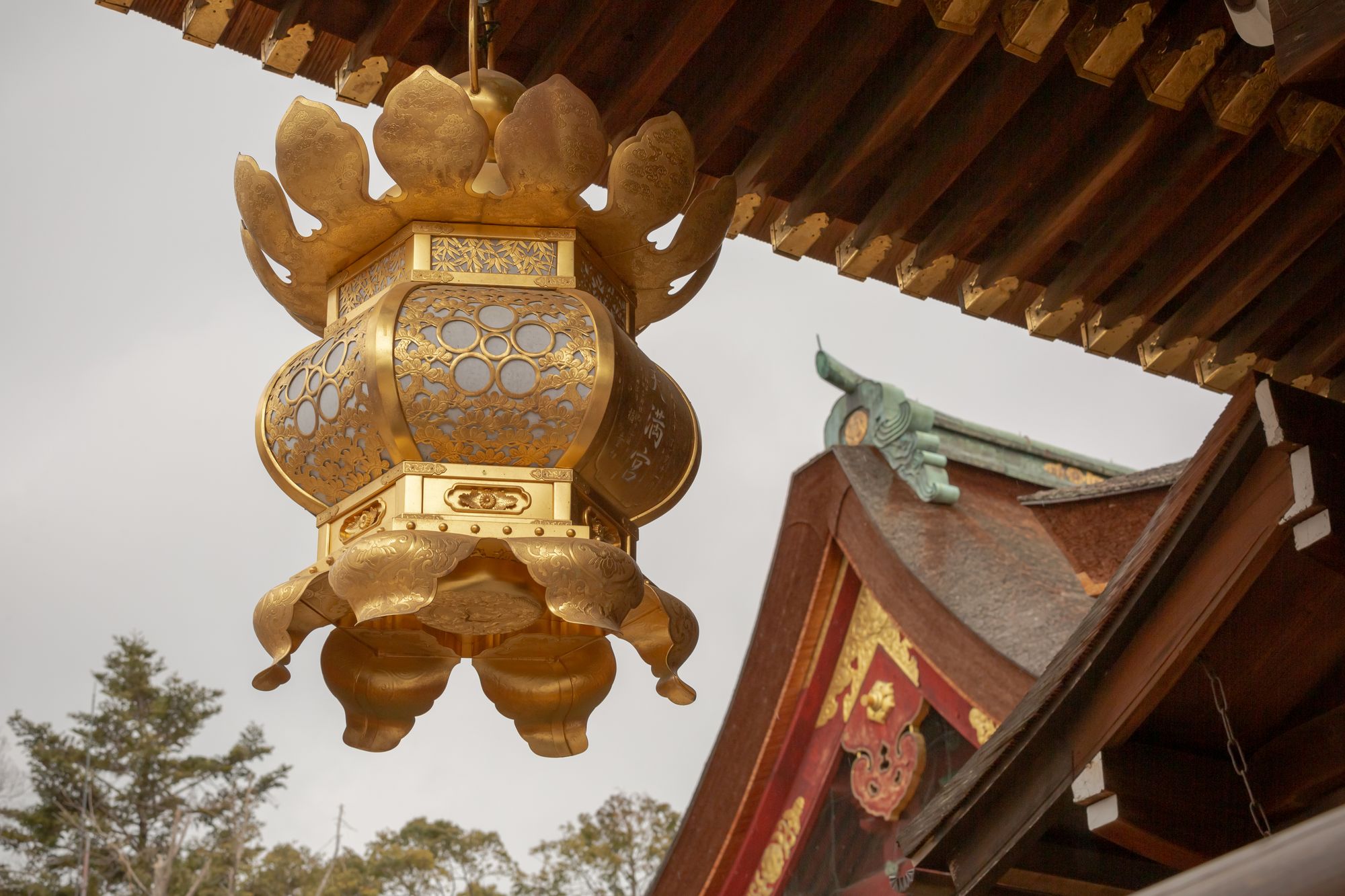
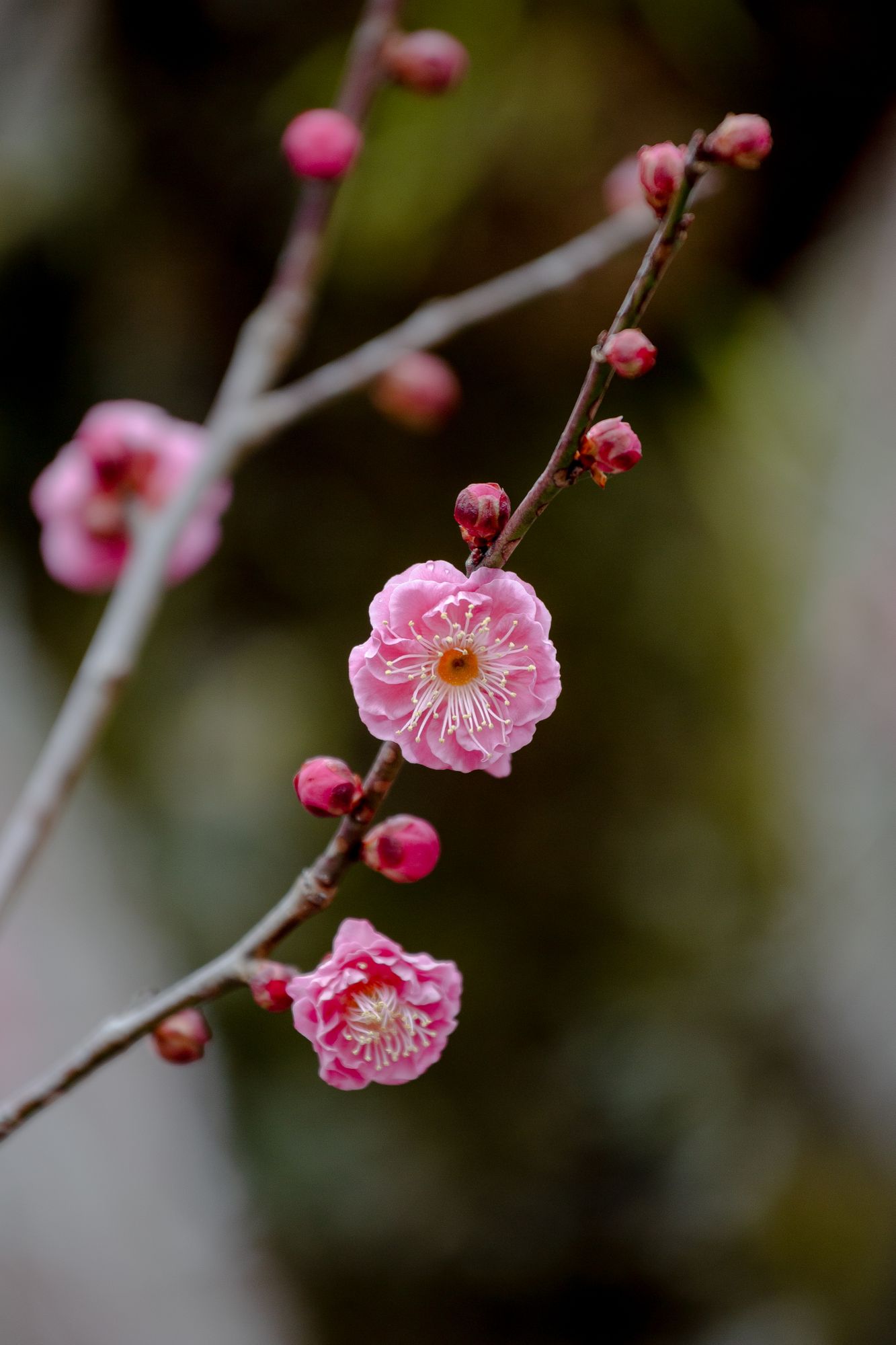
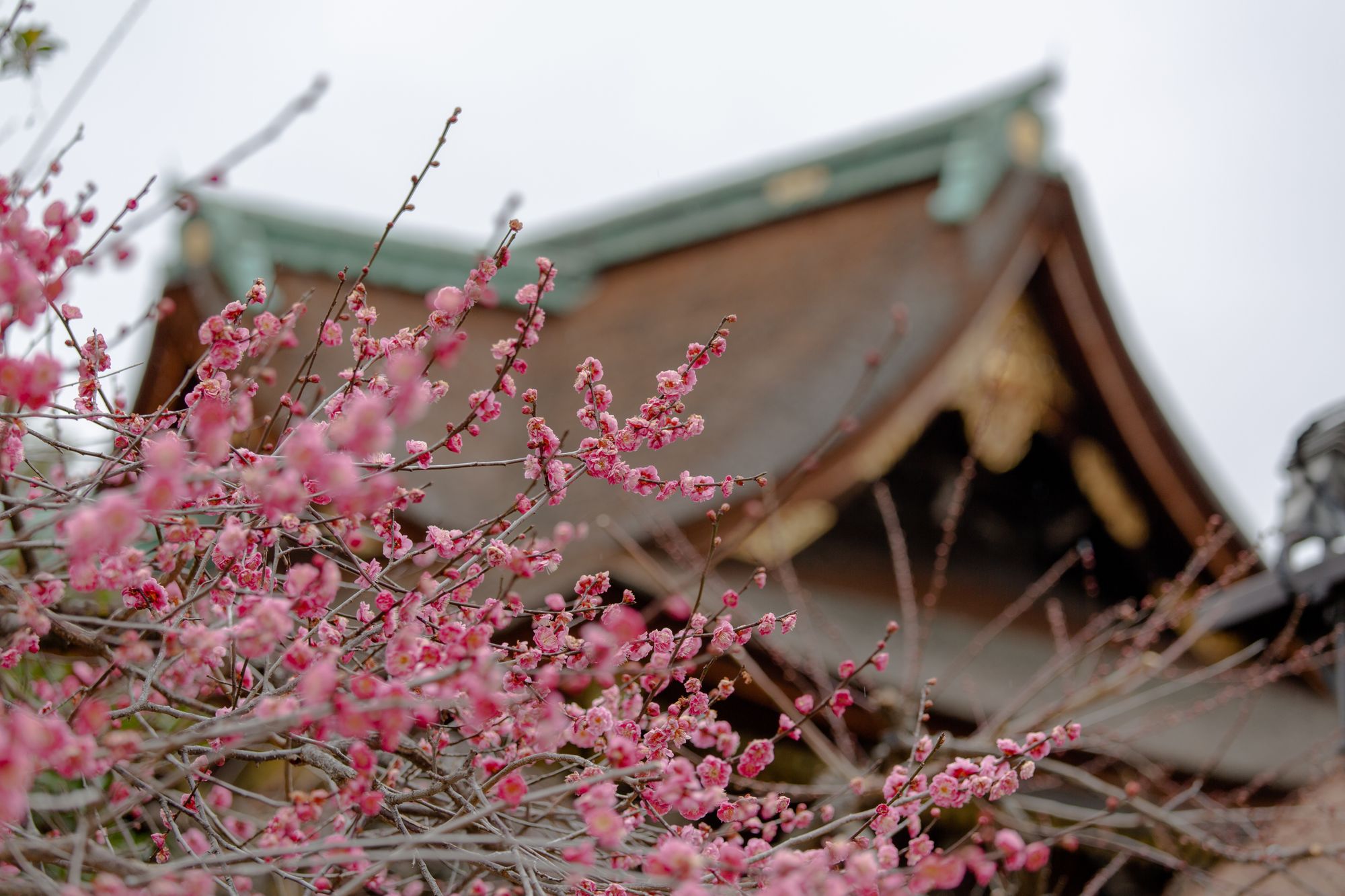
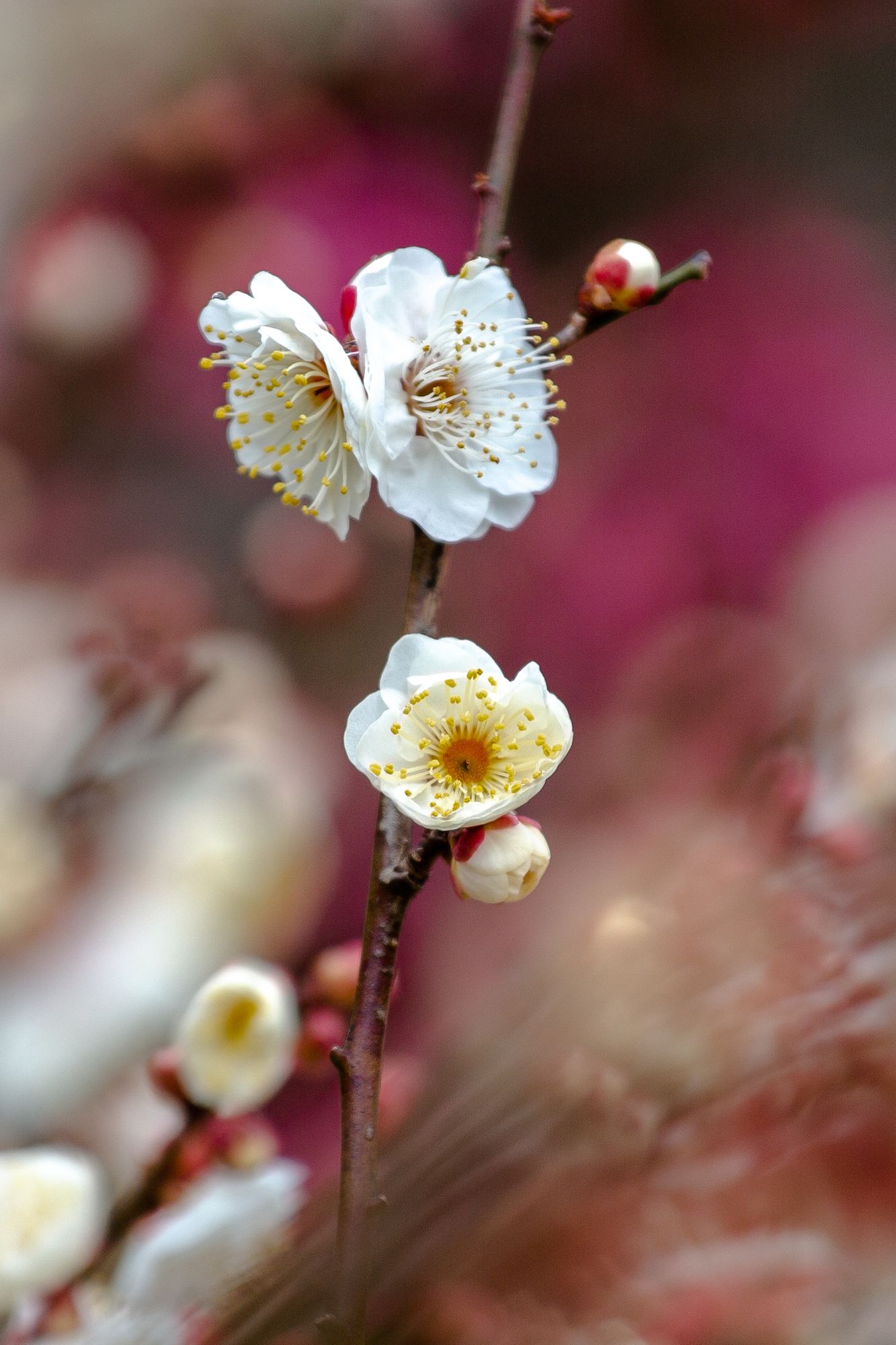
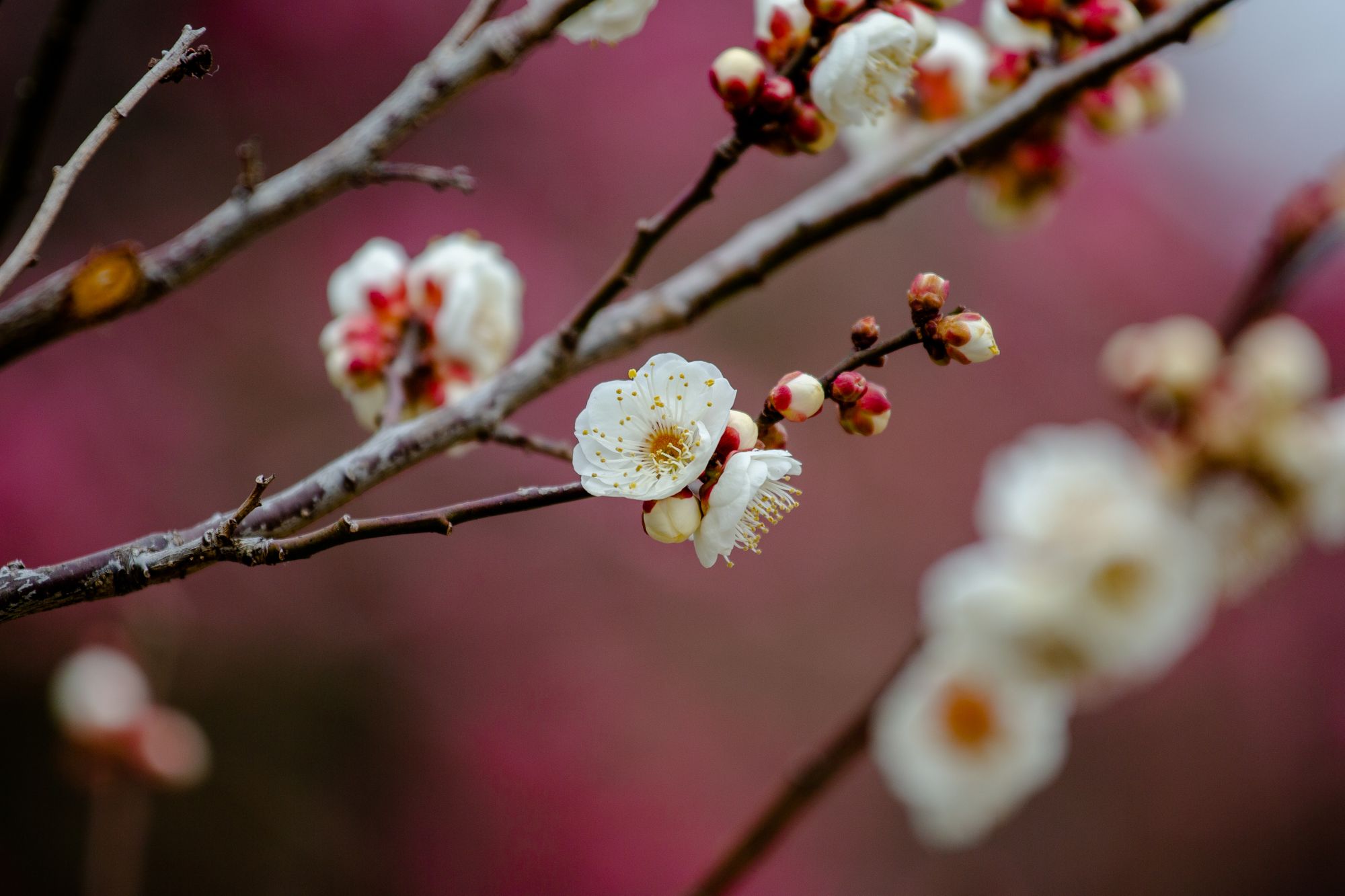
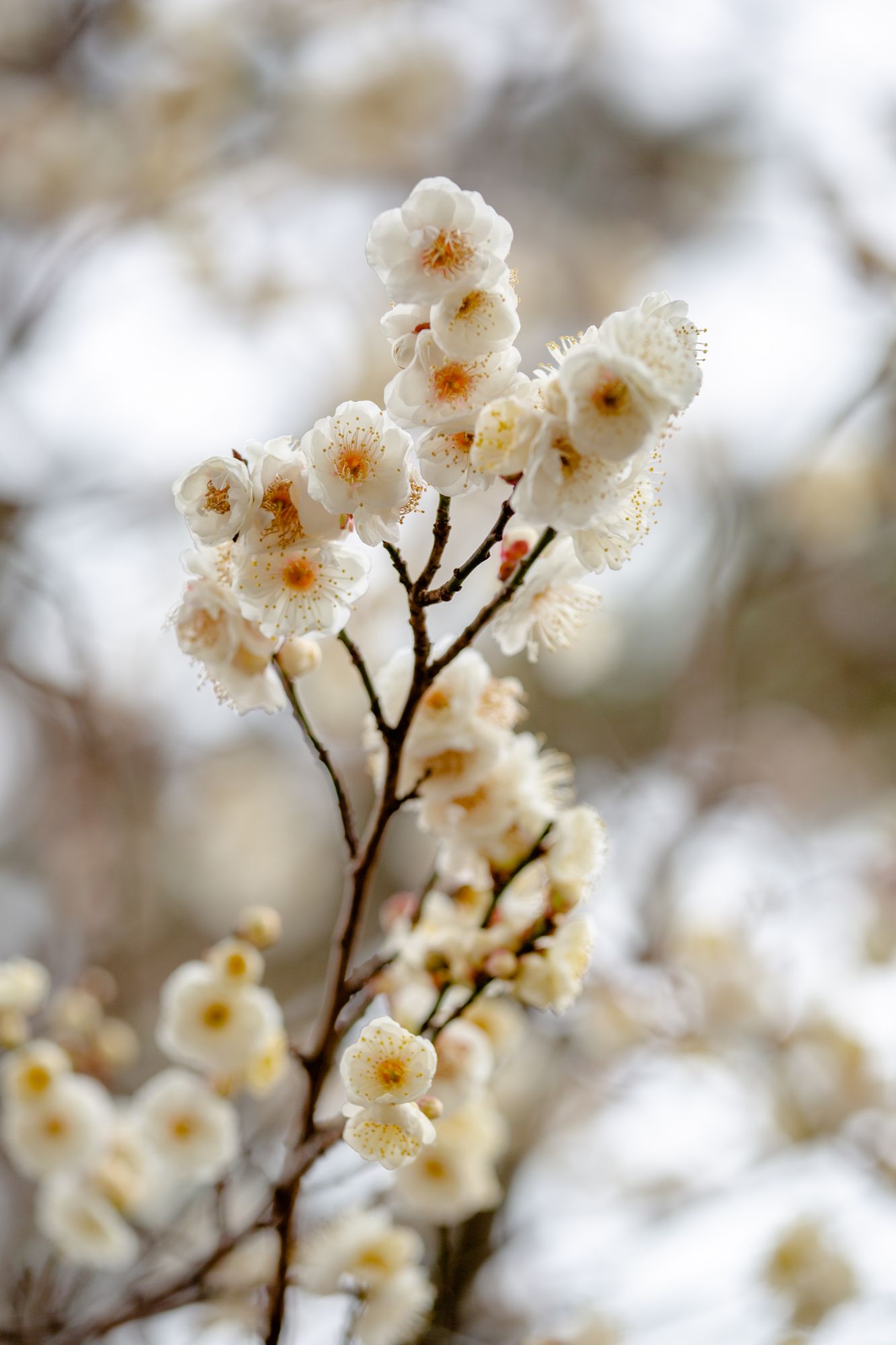
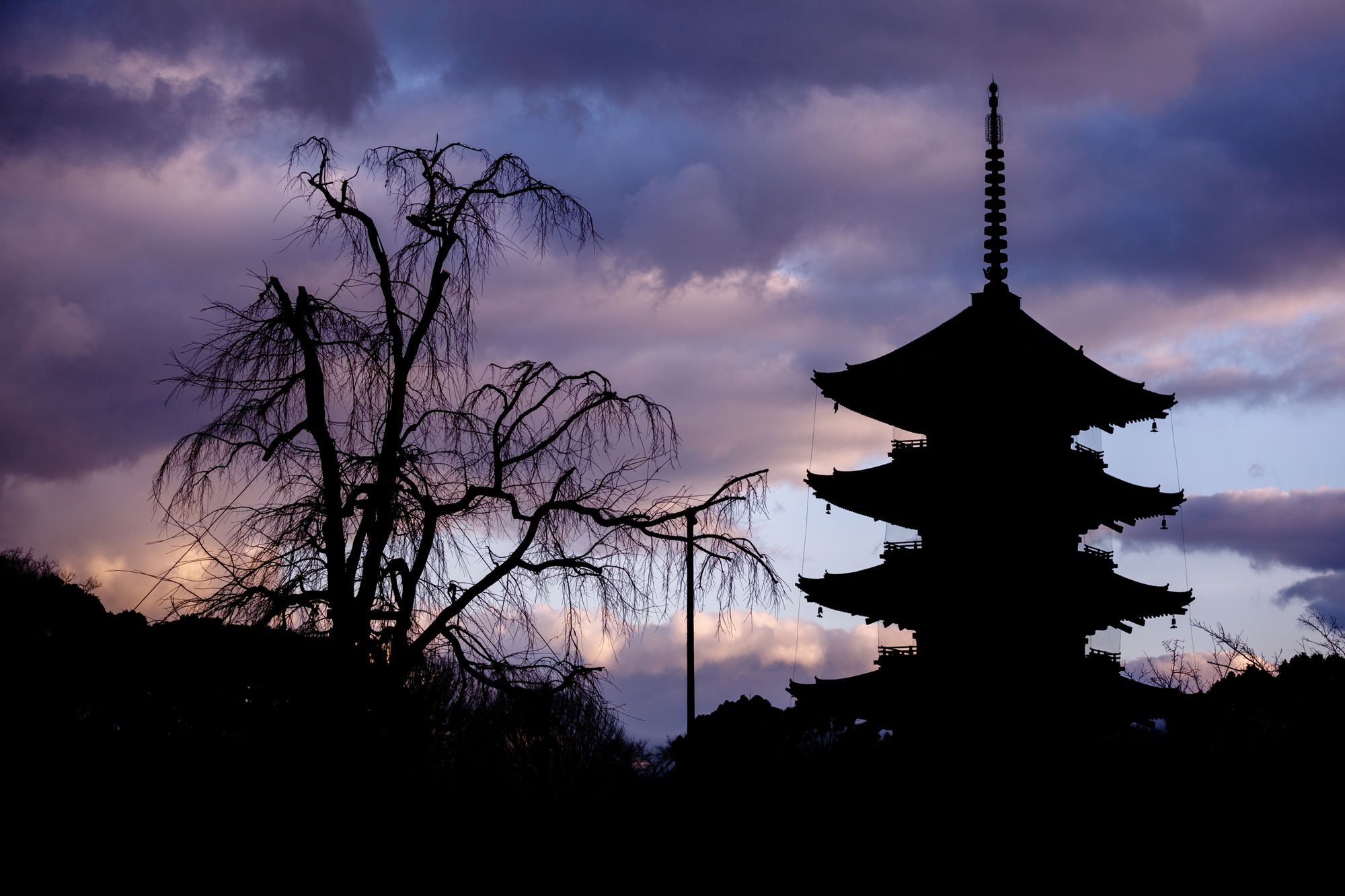
Comments